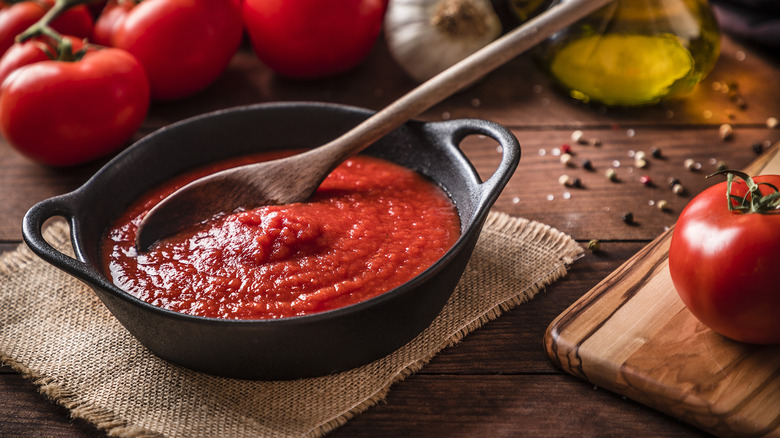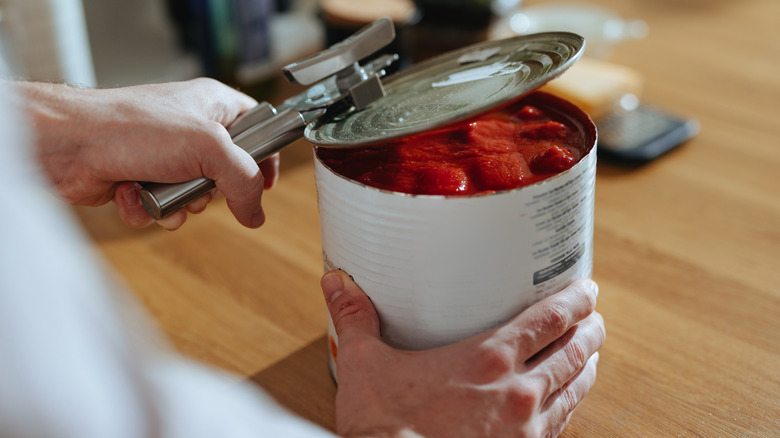Why Draining Tomatoes Is Key To A Better Flavored Tomato Sauce
Truth be told, there are some great jarred tomato sauces on store shelves, but nothing will ever beat a homemade version. The customization and freshness afforded by taking the time to simmer your own tomato sauce recipe can't be beaten. What's more? It couldn't be simpler to execute with nothing more than good (we've got opinions on this subject) canned tomatoes, aromatics such as garlic and onions, and dried or fresh herbs needed for a tasty sauce. But there are little tips and tricks that help improve the tomato sauce even further forward. A deceptively simple one is to drain the canned tomatoes before adding them to the pot, which makes for a more intensely flavored sauce.
Tomatoes, either whole or diced, are canned in a liquid typically made up of tomato juice, salt, citric acid, and calcium chloride. The juice helps keep the tomatoes moist, the salt ups the flavor intensity as does the tart citric acid, and the calcium chloride is a firming agent that helps the tomatoes retain their shape. These ingredients won't necessarily do harm if added with the tomatoes to the sauce, but they can water it down which will result in a less concentrated taste. And to reach your desired consistency, you have to reduce the liquid. So, if you're adding in all of the extra liquid from the can, you've now increased the time it takes to make the sauce while unintentionally undercutting the intensity of the flavor.
Drain away as much liquid as you like
Draining is a subjective art. Maybe you're a fan of a slightly thinner tomato sauce. If that's the case, feel free to open your can of tomatoes — and they don't have to be particularly fancy, either — and simply use the lid to drain away some of the liquid inside before adding what's left to the pot after aromatics like garlic, onions, and herbs have been sauteed. If you like a more robust sauce, thoroughly drain the tomatoes in a colander, making sure to give them a few shakes and an optional press to expel as much liquid as possible.
What will happen in the pot is that the liquid that is inherently within the tomato pieces will start to simmer away and the tomatoes themselves will have more time to make contact with the hot pan and begin to caramelize. The natural flavor and sweetness of the tomatoes will take on a pronounced depth. That said, if the pot ends up looking a bit dry as your sauce simmers, you can add back in more moisture, but do so judiciously. Stir in a small amount of either water, stock, wine, or some combination depending on the flavor profile you are going for.

